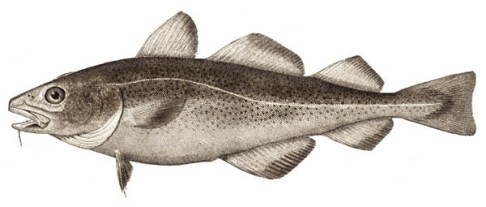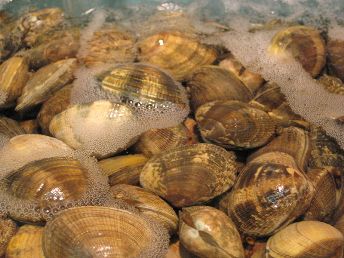If it moves, it's food!
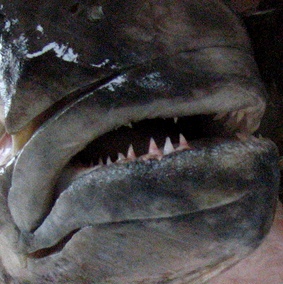 A
young halibut feeds primarily
on crustaceans and small fish.
As the flatfish ages, it becomes a voracious, active
predator that feeds mainly on fish, but also squids, crabs,
clams, echinoderms, seals, and some species of shark.
Its uncanny ability to hide on the ocean floor and ambush
prey lends to its success as a predator.
Like other flounder, the halibut creates suction when it
opens its mouth to draw the meal in.
Although it has two rows of large conical teeth used to
tear apart big prey, it will swallow an entire organism without
chewing if possible.
When food is not plentiful near the ocean floor, it will
use its strong swimming ability to chase down herring or larger
prey, such as pollock, turbot, or cod.
It has been documented that halibut utilize their muscular
tail to strike bigger prey such as cod, stunning, or even killing
them.
H.
stenolepis
is not a picky eater, as there are few common species of fish
that have not been found in their stomachs.
A
young halibut feeds primarily
on crustaceans and small fish.
As the flatfish ages, it becomes a voracious, active
predator that feeds mainly on fish, but also squids, crabs,
clams, echinoderms, seals, and some species of shark.
Its uncanny ability to hide on the ocean floor and ambush
prey lends to its success as a predator.
Like other flounder, the halibut creates suction when it
opens its mouth to draw the meal in.
Although it has two rows of large conical teeth used to
tear apart big prey, it will swallow an entire organism without
chewing if possible.
When food is not plentiful near the ocean floor, it will
use its strong swimming ability to chase down herring or larger
prey, such as pollock, turbot, or cod.
It has been documented that halibut utilize their muscular
tail to strike bigger prey such as cod, stunning, or even killing
them.
H.
stenolepis
is not a picky eater, as there are few common species of fish
that have not been found in their stomachs.
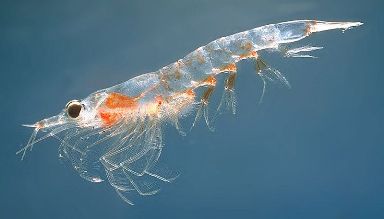 |
Euphausiids, small shrimp-like crustaceons pictured to the left, are one of the halibut's favorite entrees if they are available. Euphausiids are more commonly known as "krill". |
The halibut is not picky, so if there aren't any krill around, it will resort to preying on its second favorite meal...fish. Cod (pictured left), sand lance (pictured right), sculpin, pollack, and flounder are some of the flatfish's favorite meals.
Still if halibut cannot locate either of the above choices, it will not hesitate to feed on squid, clams or crabs (pictured respectively).
And still, if none of these choices are
available, the Pacific halibut is known to eat seagulls.
Fisherman have found remains of birds in halibuts' stomachs.
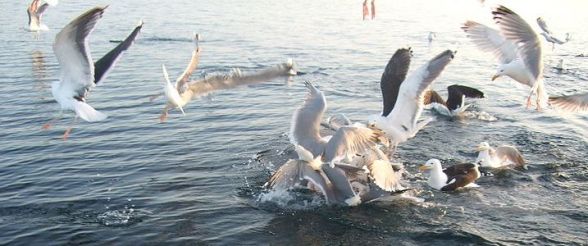
As you can see, the Pacific halibut has a VERY diverse diet. Simply put, if the fish isn't afraid of an organism it will eat it; and there are very few water-dwelling creatures it needs to be weary of, with the exception of a few.
